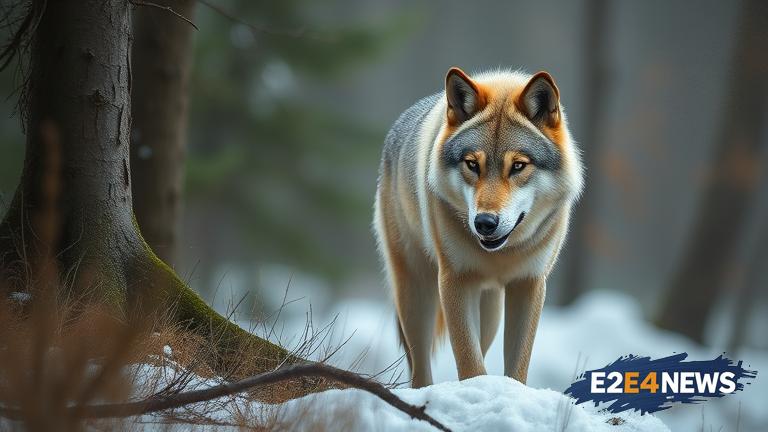In a bizarre attempt to control wolf populations, the United States Department of Agriculture (USDA) has resorted to using an unusual method. The agency has started playing audio clips of Adam Driver and Scarlett Johansson’s intense argument from the movie Marriage Story to scare away wolves. This unorthodox approach is part of a broader strategy to protect livestock from wolf attacks. The USDA’s Wildlife Services division has been experimenting with various methods to deter wolves, including the use of guard dogs, fencing, and even drones. However, the use of celebrity audio clips is a new and unexpected tactic. The idea behind this approach is that the loud, intense argument between the two actors will startle the wolves and keep them away from livestock. The audio clip is played through a radio or a speaker, and the volume is adjusted to ensure that it is loud enough to be heard by the wolves. The USDA has reported that the method has shown some promise, with a significant reduction in wolf attacks in areas where the audio clip has been used. However, the effectiveness of this method is still being debated, and some experts have raised concerns about its potential impact on the wolves’ behavior. The use of celebrity audio clips to scare away wolves has also sparked a heated debate about the ethics of using such methods. Some have argued that it is a form of psychological torture, while others see it as a necessary measure to protect livestock. The USDA has defended its approach, stating that it is a humane and non-lethal method of controlling wolf populations. The agency has also emphasized that the use of celebrity audio clips is just one part of a broader strategy to manage wolf populations. Despite the controversy surrounding this method, the USDA remains committed to exploring new and innovative approaches to wildlife management. The use of celebrity audio clips is just one example of the agency’s willingness to think outside the box and try new things. As the debate over this method continues, it is clear that the USDA is committed to finding effective and humane solutions to the complex problem of wolf management. The agency’s use of celebrity audio clips has also sparked a wider conversation about the role of technology in wildlife management. Some have argued that the use of audio clips and other forms of technology could be a game-changer in the field of wildlife management. Others have raised concerns about the potential risks and unintended consequences of relying on technology to manage wildlife populations. The USDA’s use of celebrity audio clips has also highlighted the importance of interdisciplinary collaboration in addressing complex environmental issues. The agency has worked closely with experts from a range of fields, including biology, psychology, and audio engineering, to develop and implement this method. As the USDA continues to explore new approaches to wildlife management, it is clear that collaboration and innovation will be key to finding effective and sustainable solutions. The use of celebrity audio clips to scare away wolves may seem like an unusual approach, but it is just one example of the agency’s commitment to thinking creatively and pushing the boundaries of what is possible. The USDA’s willingness to experiment and try new things is a testament to its dedication to finding solutions to the complex environmental challenges facing our world today. The agency’s use of celebrity audio clips has also sparked a wider conversation about the importance of creativity and innovation in addressing environmental issues. As we move forward in an increasingly complex and rapidly changing world, it is clear that we will need to think creatively and develop new and innovative solutions to the environmental challenges we face. The USDA’s use of celebrity audio clips is just one example of the kind of outside-the-box thinking that will be necessary to address these challenges and create a more sustainable future.





